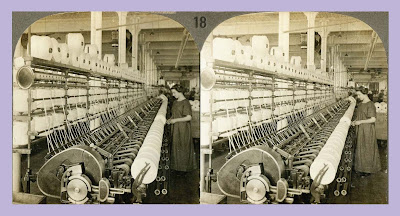If you ever get a chance to flip through one of the late 19th or early 20th century
Souvenirs of Massachusetts Legislators (available
online), which provide photographs and biographical sketches of Massachusetts legislators during the years in which they served, you’ll come across an interesting character. In the 1897 souvenir, editor Arthur Milnor Bridgman states in his introduction: “This Souvenir contains also a special feature in the picture of Tom Meagher, the gallant one-armed veteran of the War, who has been for many years a popular fixture as the ‘candy man.’” But don’t be fooled by his tongue-in-cheek nickname--Tom was a cigar dealer.
 |
Bridgman’s caption for photo
(left): “’Tom Meagher,’
the Veteran of the War of the Rebellion, Who has been the
popular
“Candy Man” of the Legislature for, lo, these many years.”
Meagher was located on the 3rd floor, outside
the entrance to the
House Lobby.
|
Meagher, a kind and familiar face in the State House for “lo, these many years”, worked his concession counter toward the latter half of the 19th century. The timeframe of his tenure is unclear, but by the mid-nineteen teens, when the publication went through a reformatting, his “feature” was no longer included. By 1919, a new proprietor by the name of Pierce O’Connell took up residence in Meagher’s stead. Notice anything familiar behind O’Connell’s counter?
 |
From the 1920 book Public Officials of
Massachusetts ('Bird Book') |
With the scant information provided by Bridgman, and from the caption accompanying Meagher’s photograph, what we do know is that he was a Civil War veteran. Additional research tells us that he was born in Ireland sometime around 1835 and immigrated to the United States in 1855. Assuming that he fought under the auspices of Massachusetts, one will find that there are a handful of entries for Thomas Meaghers in the multi-volume set
Massachusetts Soldiers, Sailors, and Marines in the Civil War. One entry in particular, for a soldier who fought in Company C of the 1st Regiment Massachusetts Volunteer Infantry, sticks out among the rest:
 |
| (Vol. I, p. 21) |
This is the only entry that mentions wounds received in battle--undoubtedly a reference to Meagher’s gravely injured right arm (for which he later received a government pension). Virginia was the scene of much violence during the Civil War. From June 25th to July 1st, 1862, under the Union campaign leadership of Maj. Gen. George B. McClellan against Confederate campaign under Gen. Joseph E. Johnston, Henrico (which includes Fair Oaks) and Hanover Counties experienced a series of six battles known as the Seven Days Battles; it’s probable that our Tom Meagher sustained his injuries during the first at what is now called the Battle of Oak Grove.
I wish we could know a lot more about Tom Meagher. As a Civil War veteran who, in his youth, experienced the horrors of battle in a country divided, who then retired to the humble life of selling cigars and chit-chatting with members of the Massachusetts General Court, we can only imagine the fascinating stories he could relate to us today. It’s certain that he was well-loved and respected by all that had the pleasure of talking with him, and the inclusion of his “feature” in over a decade’s worth of legislative souvenirs, as well as his near life-size portrait that hung on the wall outside the House lobby, is testament to their appreciation.
Kaitlin Connolly
Reference Dept.
 I recently came across a book entitled A Blight on Boston: How Shall it be Removed written by John Albree and published in 1906. The book talks about idle land and abandoned railroad property in Park Square, located near the Back Bay, on the corner of Boylston Street, Columbus Street and Charles Street where the Boston Common and the Public Gardens meet. The land was abandoned by the Boston and Providence Railroad in 1899 and by 1906 when the book was written it was still abandoned. The author describes the land as unproductive and “not earning up to its potential in taxes.” By 1906 the buildings have been occupied by an automobile dealership and by a roller skating rink with the Shubert Theater moving in a few years later on January 24, 1910.
I recently came across a book entitled A Blight on Boston: How Shall it be Removed written by John Albree and published in 1906. The book talks about idle land and abandoned railroad property in Park Square, located near the Back Bay, on the corner of Boylston Street, Columbus Street and Charles Street where the Boston Common and the Public Gardens meet. The land was abandoned by the Boston and Providence Railroad in 1899 and by 1906 when the book was written it was still abandoned. The author describes the land as unproductive and “not earning up to its potential in taxes.” By 1906 the buildings have been occupied by an automobile dealership and by a roller skating rink with the Shubert Theater moving in a few years later on January 24, 1910. 



